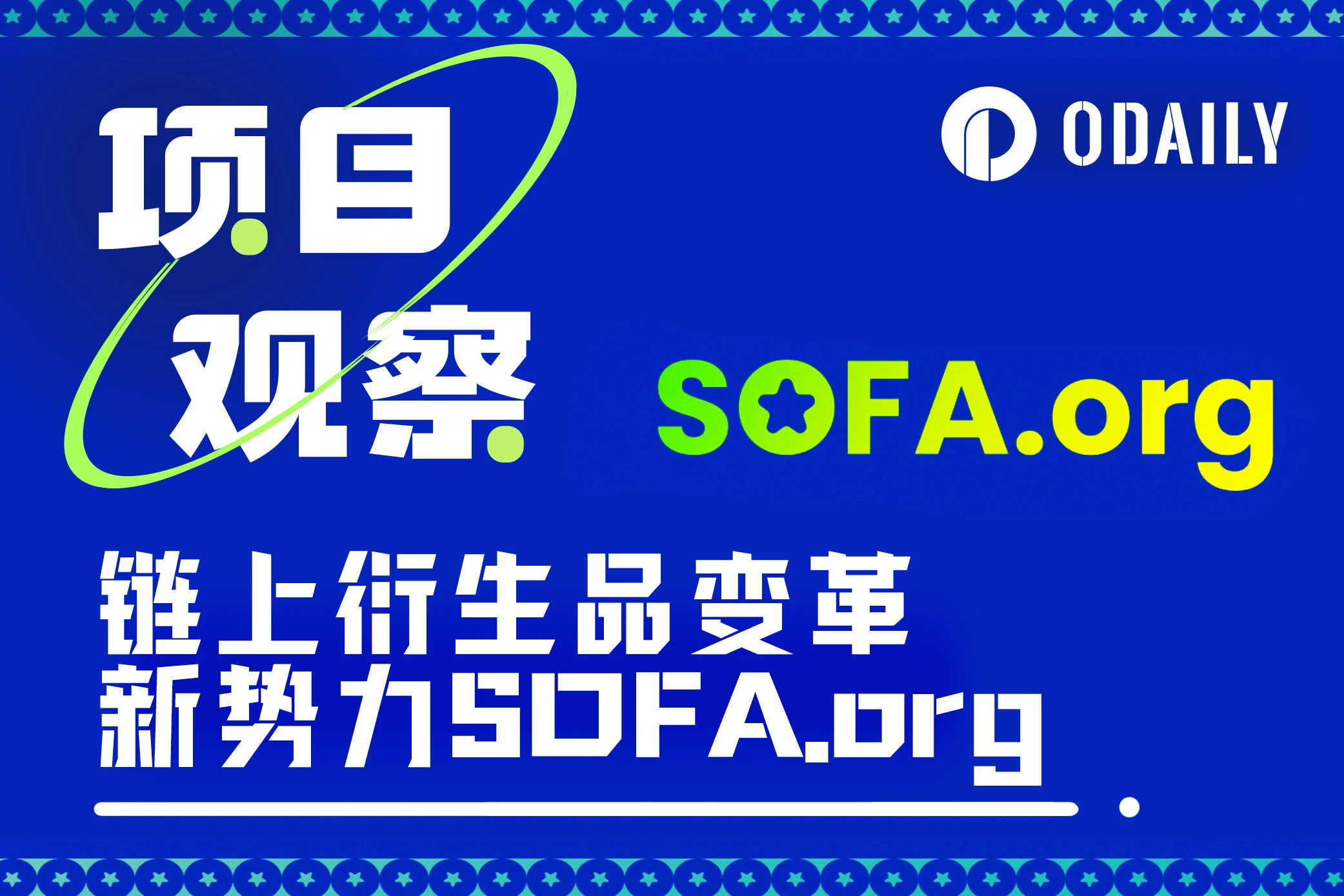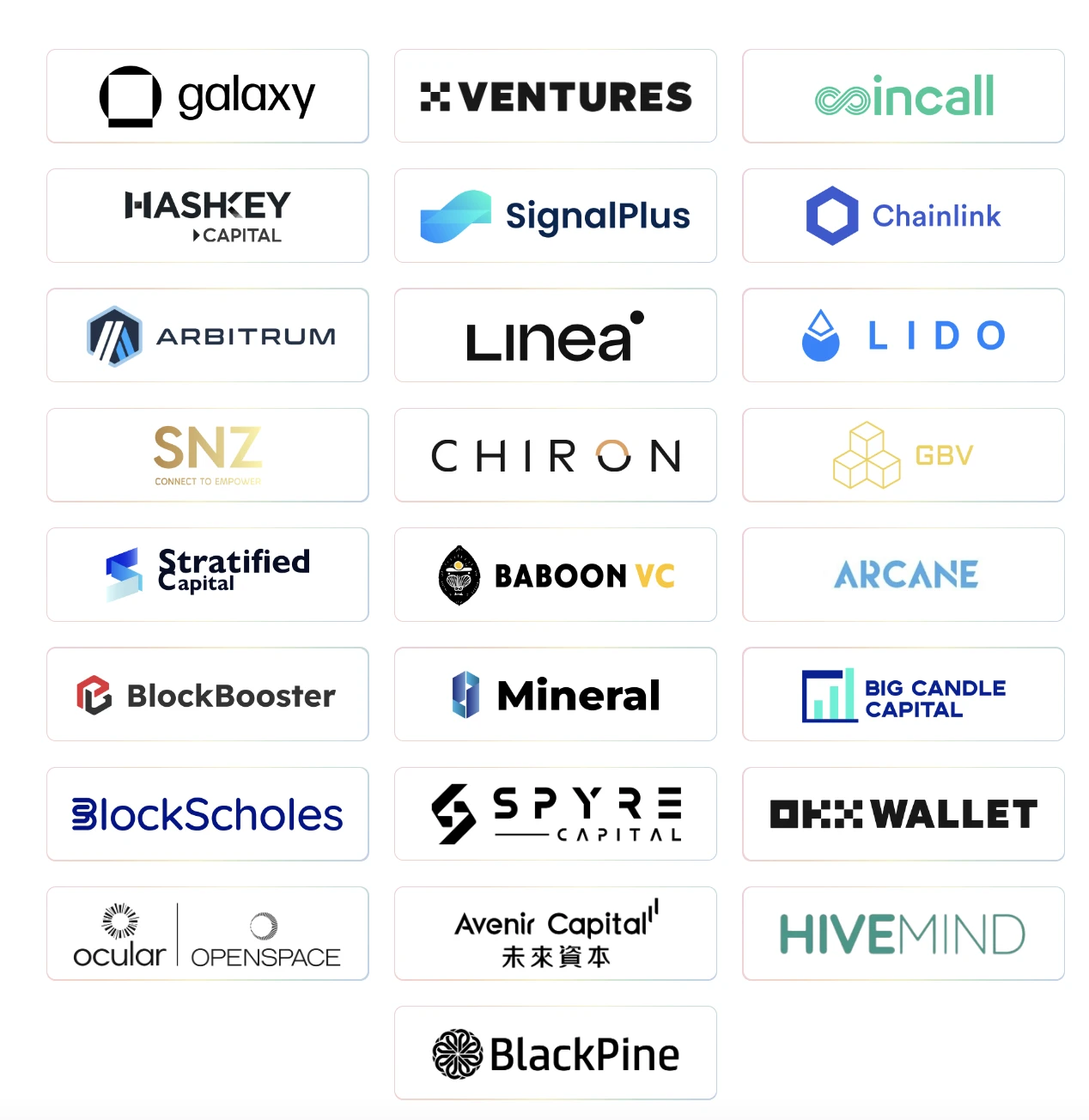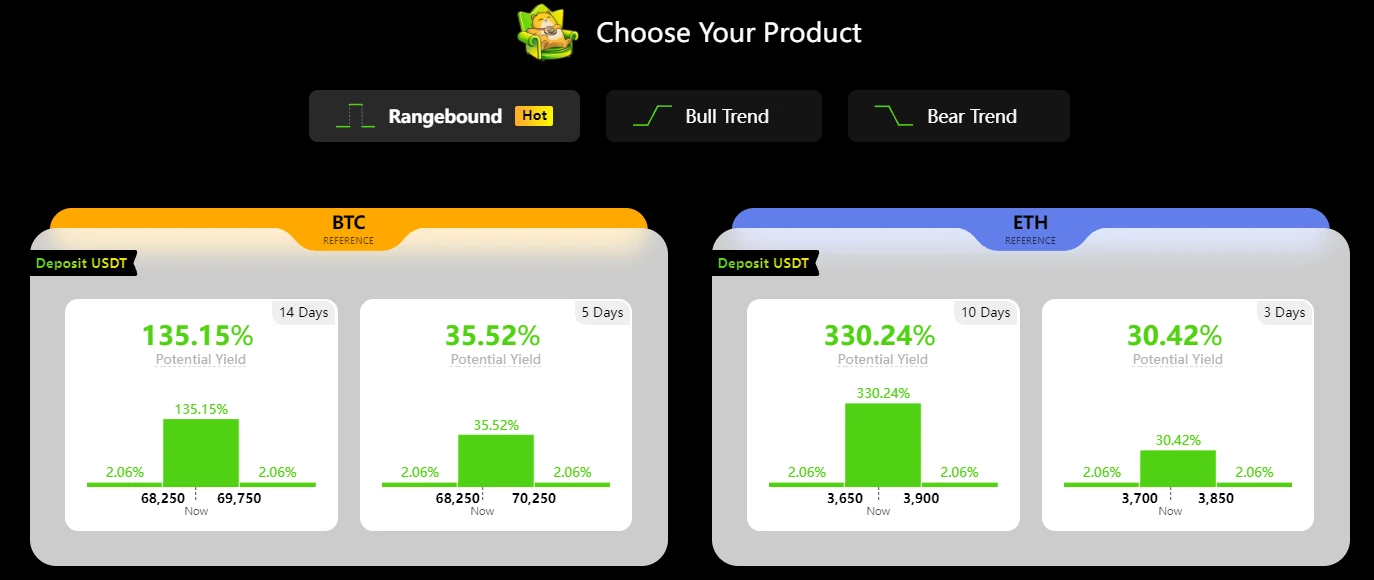導入
低コストのL2チェーンや独自チェーンの発展により、CEXからオンチェーンデリバティブへの流れは止められなくなっています。一連のオンチェーンデリバティブは目覚ましい成果を上げていますが、その市場シェアはCEXに比べるとまだ小さいです。その根本原因をたどると、チェーンとデリバティブの間には資金とモデルのギャップがあり、それがユーザーの使用率とコンバージョン率の不足につながっています。デリバティブの道には、早急に変化の力が必要です。
これに対して、 一連のエコシステムと主要プロジェクトがデリバティブインフラ組織SOFA.orgを立ち上げました。 メンバーには、投資管理会社Galaxy Asia Trading Ltd.、Layer 2 Arbitrum、Linea、インフラChainlink、OKX Wallet、SignalPlus、VC OKX Ventures、HashKey Capitalなどが含まれます。 組織メンバーは、SOFA.orgの共同創造と構築に多面的に貢献します。 デリバティブ業界に新たな勢力をもたらします。
SOFA.orgは、デリバティブの古い問題を解決するために、完全な清算および決済エコシステムを確立することを目指しています。エコシステム内の製品は、統一されたフレームワークに従って、基礎となるアーキテクチャ、中間レベルのプロトコル、およびトップレベルのユーザーと資金間の接続の動作モードを実現します。さらに、SOFA.orgはトークンRCHをリリースし、革新的なトークンエコノミクスを通じてエコシステム全体の運用を促進します。
SOFA がオンチェーンデリバティブの未来をどのように変えるか
近年のFTXや3ACの崩壊、あるいは私たちから遠く離れたリーマン・ブラザーズなどの伝統的金融機関の破綻など、中央集権的な機関がもたらす不透明性リスク、レバレッジリスク、取引相手デフォルトリスクはすべて、分散化の重要性を実証しています。
暗号分野では、デリバティブ取引をCEXからチェーンに移行する傾向も強まっています。GMX、AEVOなど、複数のチェーンがすでに独自の主要なデリバティブプロトコルを生み出しています。各プロトコルには独自の特徴と優れた利点があります。しかし、まだいくつかの問題があります。まず、資本レベルでは、ポジションはアカウント内のポジションの開設と決済に制限されており、資金の使用が制限され、さらなる組み合わせ製品の設計と使用に役立ちません。一方、デリバティブは多額の資金が関与するため、セキュリティリスクの影響は広範囲に及ぶため、ユーザーは新しいチェーンと新しいプロトコルのセキュリティを完全に信頼することが難しく、開発が制限されます。
SOFA.org は、オンチェーンデリバティブの競争環境とモデルを変革するために誕生しました。まず、SOFA.org はスマート コントラクトの不変性とオンチェーン資産決済機能を利用して、取引のすべての当事者が仲介者に依存する必要がないようにします。ユーザーとマーケット メーカー間の取引は、標準化された金庫によって自動的に決済され、信頼性と分散化のコア バリューを実現します。
SOFA.orgは、金融商品のリスクを革新的な方法でトークン化し、名目金額だけでなく、取引のその他の重要なパラメータも記録し、チェーン上のポジショントークンに変換します。ポジショントークンは、チェーン上の資産の所有権を表し、通常のERC-20トークンのように自由に転送および組み合わせて使用できます。他のプロトコルの担保として使用できるため、資本の流動性と利用効率が大幅に向上します。
上記の機能に加えて、SOFA.org はさまざまなエコシステムやマーケットメーカーと協力して、ユーザーのセキュリティニーズ、レバレッジニーズ、流動性ニーズを満たす豊富なオンチェーンデリバティブプロトコルを立ち上げ、最終的にデリバティブシステムと開発パスを変革します。
製品とエコトークンの詳細な説明
生態学的成長フライホイール – インセンティブトークン RCH
チェーン全体で見ると、デリバティブ契約の数は一定の規模に達しています。 数多くの競合製品の中で、ユーザーの参加を引き付けるにはどうすればよいでしょうか?
基本的な要素は、優れた製品とサービスを提供することです。前のセクションで説明したコンテンツを通じて、SOFA.orgはユーザーに革新的で実用的な派生サービスを提供しており、これが市場での成功と繁栄の基盤となっています。十分に活用できるもう1つの重要なポイントは、トークンによる経済刺激です。dYdXなどのプロトコルは、効果的に設計されたインセンティブポリシーが優れた製品を新しいレベルに引き上げることができることを実証しています。
これに対して、 SOFA.org は、インセンティブ トークン RCH を通じて環境に優しい製品の使用と開発を効果的に奨励することを目的として、安定した大容量で公平に配布されるトークン システムを設計しました。 トークンの詳細は次のとおりです。
-
公平な分配: RCHの総額は3700万に固定されており、 投資家や事前販売の割り当てなしで6月7日に発売される予定だ。 オンラインになると、初期LPとして2500万RCH(全体の約2/3)と700ETH以上が存在し、オンラインになるとLPは破棄されます。
-
インセンティブのための安定した出力: トークン発行後、エコシステム内で取引するユーザーに毎日12,500 RCHがエアドロップされ、すべてのRCHエアドロップが完了するまで、エアドロップ量は180日ごとに20%ずつ減少します。
-
デフレーション設計: さらに、SOFA.orgエコシステムのプロトコルが得た手数料はすべて、UniswapでRCHを購入して破棄し、完全なデフレを実現します。また、SOFA.org協会に参加するすべての派生プロジェクトは、プロトコルに手数料の買い戻しと破棄のメカニズムを追加する必要があり、エコシステムの発展とともにデフレの力は高まり続けます。
上記の設計に基づいて、 RCHは安定した価格の下限を確立しており、VCや他の先行販売者からの売り圧力に直面することはなく、投資家に公平な参加機会を提供しています。 手数料に基づく破壊メカニズムは、トークンに中長期的な価値を提供します。エコシステムの長期的な運用は、短期的な変動を恐れることなく、トークンに長期的な上向きの発展力をもたらします。
ユーザーにとって、RCHモデルは継続的な取引補助金をもたらし、優れたデリバティブプロトコルを使用しながら追加収入を得ることができます。さらに、RCHには長期保管価値があります。エコシステムの発展に伴い、ユーザー数と取引量の増加によりRCHの価格がさらに上昇し、それがユーザーの取引熱にフィードバックされるため、 SOFA.orgエコシステムの完全な成長のフライホイールを形成する .
基本プロセスの実行
ソファ 当初は決済システムと暗号構造化商品のトークン化に注力し、EthereumとArbitrumを立ち上げ、その後LineaやX Layerなど、より多くのEVM互換チェーンをサポートする予定です。前述のように、SOFA.orgの大きな特徴は、取引プロセスがチェーン上で実行されるため、集中化リスクと相手方のデフォルトリスクが排除されることです。その基本的なプロセスは、次の手順に簡略化できます。
-
機関投資家のマーケットメーカーは、構造化商品のリアルタイム価格をプロトコルに継続的に提供します。
-
ユーザーは表示された価格に基づいて製品を購入することを選択し、資金は製品の DeFi 金庫 (Valut) に送信され、ロックされます。
-
マーケット メーカーの最大エクスポージャー資金も送金され、金庫にロックされます。この時点でいずれかの当事者が必要な資金を提出しなかった場合、取引は実行されません。
-
ユーザーとマーケットメーカーは対応するポジショントークンを受け取り、自由に転送して組み合わせて使用することができます。
完全なオンチェーン実行による分散化の基本要件を達成した後、SOFA.org はオンチェーンデリバティブシステムをどのように構築および開発するのでしょうか?
オンチェーンデリバティブプロトコル
SOFA.orgの答えは、アーキテクチャの標準化と製品マトリックスの強化です。 SOFA.org 協会に参加するすべてのデリバティブ プロトコルは、2 つの要件を満たす必要があります。1 つ目は、プロトコル料金を RCH の買い戻しと破棄のメカニズムに書き込むこと、もう 1 つは、SOFA.org の設計仕様を満たすことです。これにより、SOFA.org の基本的なクリアリング機能がこれらのプロトコル上で相互運用可能になり、ポジション トークンもエコシステム内のさまざまなプロトコルにネストできるようになります。アーキテクチャの標準化により、一方ではセキュリティの問題がいくつか解消され、他方ではエコロジカル ネットワーク効果の形成の基盤が築かれます。
ユーザーのリスク嗜好は多様であり、対応するデリバティブも複雑であるため、両者を結び付ける包括的かつマッチングするシステムが必要です。相互運用可能なアーキテクチャは、ユーザーにリスク嗜好に合った投資ポートフォリオを構築するための豊富な手段を提供します。エコシステムとプロトコルにとって、TVLとトラフィック共有は、双方向ネットワーク効果の確立を意味します。さらに、RCHエアドロップ配布メカニズムは、プロトコルが迅速なコールドスタートを実現し、製品エクスペリエンスとサービスの向上を促進するのに役立ちます。
トークンがオンラインになる6月7日、SOFA.orgはEarnとSurgeという2つのプロトコルを立ち上げます。この2つのプロトコルは、オンチェーン構造化金融商品を対象としています。Earnは固定収入+型、Surgeは高収入構造化商品です。
Earn プロトコルでは、ユーザーはレンジバウンド、強気トレンド、弱気トレンドの 3 つの方向から選択できます。価格トレンドがユーザーの予測した方向と一致する場合、ユーザーは超過収益を受け取ります。レンジを超えた場合でも、最低収益が保証されます。
Surge も区間選択を提供していますが、リターンは保証されていません。その代わり、正しい予測をしたユーザーには高い報酬が与えられます。リスクレベルは Earn とはまったく異なりますが、予測区間を調整することでリスクをコントロールできます。どちらも、さまざまなリスクレベルに対するユーザーの基本的なニーズを満たしています。
前述の通り、上記2つの製品におけるユーザーのポジションはトークン化され、SOFA.orgはERC-1155標準を使用してこれを実装します。ERC-20の標準機能に加えて、資産の分割と結合も可能で、ポジションの有効期間や価格などの重要な情報を保存できるため、他のプロトコルのポジショントークンとの組み合わせが可能になります。
たとえば、ユーザーはポジショントークンを担保として使用して運用のためにより多くの資金を借りることができ、それによって資本利用効率が向上し、元の製品の収益を維持しながら市場参加の機会を増やすことができます。
同様に、ユーザーは統合プロトコルを使用してレバレッジを減らし、リスクをヘッジするために高リスクのポジショントークンを低リスクのプロトコルに導入することもできます。
さらに、トークンの最終的な所有者はデリバティブの有効期限を取得するため、 時間軸の柔軟性 ユーザーはネストされた使用を通じて事前に利益を固定することができ、終値オプションに似た高リスク・高リターンの商品を組み合わせることもできます。SOFA.orgは今年、オンチェーン定量グリッドの二重通貨財務管理プロトコルや、他のプロトコルに回転貸付レバレッジを提供する貸付プロトコルなどの基本製品も発売すると報じられています。
SOFA.orgの動きは、ユーザーの投資ポートフォリオに無限の可能性をもたらします 包括的なデリバティブネットワークを通じて、一般ユーザーに十分な基本商品を提供すると同時に、プロのプレーヤーはこの組み合わせ特性を最大限に活用して、専門的なニーズを満たす投資ポートフォリオを作成することができます。
ガバナンストークンSOFAの解釈
SOFA.orgは、エコロジカルトークンRCHに加え、今年プロトコルガバナンストークンSOFAもリリースし、このトークンを通じてコミュニティの参加とプロトコルの自己革新を促進し、エコロジカルな発展をさらに促進することを目指しています。
分散型、非営利、オープンソース技術組織として、SOFA.orgエコシステム内のプロトコルの数は今後も増加し続けるでしょう。 高品質の新しいプロトコルを導入し、エコシステム内の既存のプロトコルの革新を促進し、RCH経済システムの円滑な運用を維持する方法 これらはすべて、エコシステムの発展における重要な課題です。
そのため、SOFAトークン保有者はコミュニティ代表として、担保カテゴリー、新しいエコシステムパートナーの参入、毎日のRCHエアドロップクォータなどの一連の重要な問題について投票します。このメカニズムにより、優れた新しいプロトコルがRCHエアドロップクォータを通じてエコシステムに統合され、迅速なスタートアップを実現します。競争力を維持するために、既存のプロトコルは製品エクスペリエンスとサービスを継続的に改善し、エアドロップクォータを確保し、エコシステム内でプロトコルの健全な競争と発展を実現する必要があります。
公式文書によると、SOFAトークンは6か月以内にエアドロップされる予定です。初期の協会メンバーとコンサルタントに加えて、初期のエコシステム参加者とAMM流動性プロバイダーもトークンのエアドロップを受け取る機会があります。
結論は
SOFA.orgは、分散化され相互接続されたエコロジカルパラダイムの設計と、革新的で公正なトークンインセンティブメカニズムを組み合わせることで、オンチェーンデリバティブの開発パスを再構築しています。優れた製品と持続可能なトークンインセンティブを通じてエコロジカル成長のフライホイールを構築し、デリバティブトラックに変革力をもたらすことが期待されています。
この記事はインターネットから引用したものです: オンチェーンデリバティブの波が到来、新たな変化の力の解釈 SOFA.org
関連:Planet Daily | 連邦準備制度理事会カシュカリ:2024年の利下げ回数は2回以下と予想。
ヘッドライン 連邦準備制度理事会カシュカリ氏:2024年に2回以上の利下げは見込まれない 連邦準備制度理事会のカシュカリ氏は、インフレを抑えるために弱い経済は必要ないと考えており、2024年の利下げ回数は間違いなく2回以下になると予想している(ゴールデン・テン)。 マウントゴックス、10月31日の債権者返済期限に備えてビットコインの送金を確認 マウントゴックスが公開した文書によると、マウントゴックスは、以前の送金が10月31日の債権者返済期限に備えるためのものであったことを確認した。 提出書類によると、再生管財人は、再生支払い計画に基づき、再生債権のうち仮想通貨に割り当てられた部分の返済を準備している。 この返済とは、再生債権者の選択により、(i)例えば…











